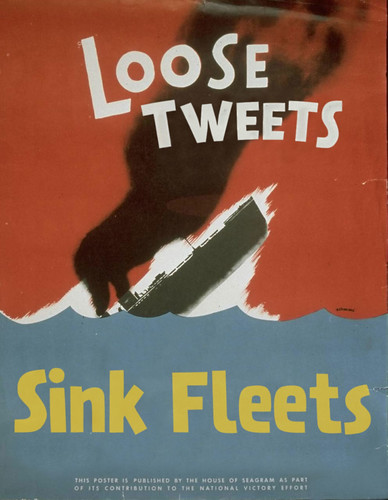 A Tweet on the #SMEM (Social Media for Emergency Management) hash-tag alerted me to the release of an official “Army Social Media” app on the iPhone. No, this isn’t America’s Army where teens battle it out Call of Duty style, but rather a handbook for men and women in service and their families on using social media.
A Tweet on the #SMEM (Social Media for Emergency Management) hash-tag alerted me to the release of an official “Army Social Media” app on the iPhone. No, this isn’t America’s Army where teens battle it out Call of Duty style, but rather a handbook for men and women in service and their families on using social media.
( Forget this blog, let me download the app! )
Why release such an app? Soldiers love Facebook, Twitter, Skype, etc. as much as we do, possibly even more considering the time spent apart from their loved ones. The problem enters when information shared gets in the hands of the enemy. While “checking-in” to a secret base is obviously a no-no, it may be less obvious to some that Tweeting “I’m leaving Kuwait and heading to Iraq in 3 days” is providing the enemy with intelligence that could put soldiers’ lives in danger.
I give the team a lot of credit for putting together an app like this and can only imagine the issues behind the scenes when putting an official stamp on it, but it wouldn’t be a CB2 if we (myself and GovLoop’ers in the comments) didn’t have some constructive feedback for Version 2. So let’s share alike with our friends at the Army.
- The content is solid. From providing an overview to what social media is, to its associated risks, to using it effectively in a crisis, these documents are very well written.
- It ties together multiple presences. Facebook, Twitter, Flickr and YouTube can all be accessed from within the app, rather than Googling in hopes of finding the official accounts.
- It solicits questions and feedback. From the Chief of Public Affairs’ letter to the About page, users are encouraged to ask questions about grey areas.
What I’d like to see improved:
- Consider an initial selection at launch of “I’m a soldier” or “I’m a family member” and tailor the content appropriately.
- Lead with the scary Case Studies, don’t bury them below the fold. Smack me in the face from the get-go with “Hey, social media is awesome for keeping in touch with your friends and family, but we’re at the point of needing an app like this because what you do online may be helping the enemy and has cost soldiers’ lives.”
- Follow it up with a number of simple, to-the-point examples of those do’s and don’ts. We make fun of sexual harassment videos, but “this is appropriate, this is not” examples are what many learners need.
- Make it fun. Take a page from America’s Army. Start with the content from the text documents and turn it into an audio or video clip. Move away from “Table of Contents” – ah! a book! I hate reading anything longer than a few sentences email on my iPhone. It wouldn’t take long to have a soldier read aloud each document and provide a play button within the app. Even better would be a video, but I realize the time and effort involved in that.
- Add a “Social Savvy Solider” multiple choice or true/false quiz for two reasons. 1) it’s a fun way to test your knowledge and then point users back to articles that reference what they got wrong, 2) let them post their score to Facebook or Twitter, virally spreading word of the app to other soldiers and their families.
- Bookmarks and Voice Memos are unnecessary and detract from th app, unless there’s a way to share those memos with family or something along those lines. There’s not enough content to warrant bookmarks and iPhones have a voice memo tool already. Removing these would open valuable real estate for the two buttons at the bottom of the app.
Read Last Week’s CB2: Second Screen for Government
![]()





I might flip the “Social Savvy Soldier” and make it the “Socially Silly Soldier” – more of a fun version of what not to do…not sure which is the bigger motivator of the target audience: positive (nobility) or negative (“ridicule”)? Thoughts?
Everybody is issued Blackberry’s – how is an app for a the IPONE going to help?
Good share Chris.
How does this fit into the mission? Would it be a “downtime” activity or does it become a piece of ordinance? With GPS, a captured phone might be an excellent targeting apparatus.